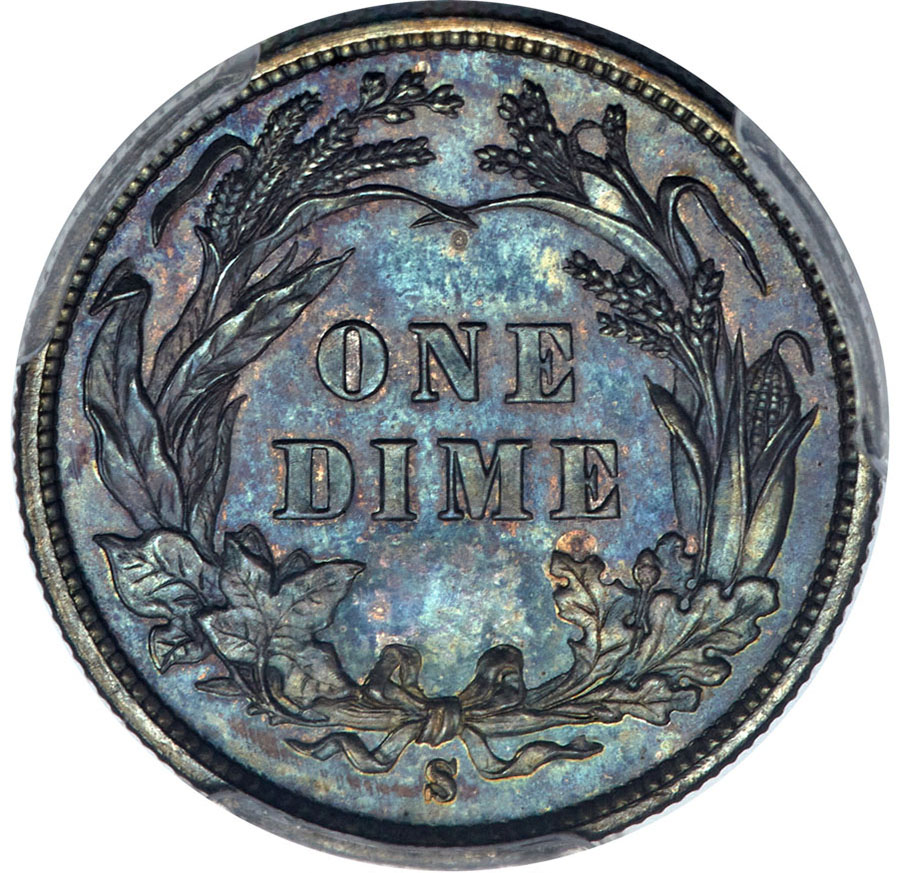WITH HIS REMARKABLE ASSEMBLAGE HEADING TO AUCTION, THE LIFELONG COLLECTOR REFLECTS ON HIS NUMISMATIC JOURNEY
By Steve Lansdale
Bruce Sherman is one of the most successful money managers in the country. A generous philanthropist. Chairman and principal owner of the Miami Marlins. He is also a passionate historian with a keen interest in numismatics. The same drive that earned him success in the financial world has turned a simple hobby of collecting coins into what Heritage Auctions President Greg Rohan calls “one of the most remarkable achievements in numismatics.”
“Coin collecting has been a lifelong passion of mine,” says Sherman, who formed Private Capital Management in 1986 and led the ownership group that acquired the Marlins in 2017. “What started in my early teens has evolved into a collection of rare and significant U.S. coins. I am incredibly fortunate to have my name be included in the provenance alongside some of the hobby’s most notable collectors.”
1798 $5 Small Eagle, BD-1, R.7, AU55 PCGS. From The Bruce S. Sherman Collection, Part I. Available in Heritage’s January 15-19 FUN US Coins Signature® Auction.
What defines the Bruce S. Sherman Collection is not only its expansive scope and completeness, but the quality and rarity of its individual pieces. When selecting a representative of the Barber dime series, Sherman did not merely travel the usual path of acquiring a high-grade common-date coin. He also pursued the opposite extreme, selecting the single rarest issue in the series: the 1894-S, of which only nine examples are known. And not just any 1894-S dime was sufficient – he sought out the Eliasberg specimen, regarded as the finest known. This is a tale told throughout the collection, culminating in a type set made up in large part by the finest surviving examples of famous rarities.
1894-S 10C Branch Mint PR66 PCGS. CAC. From The Bruce S. Sherman Collection, Part I. Available in Heritage’s January 15-19 FUN US Coins Signature® Auction.
Beginning early next year, Sherman’s eye for quality and rarity will be on display for collectors around the world when the first selections from his extraordinary assemblage are featured in Heritage’s January 15-19 FUN US Coins Signature® Auction. In advance of the auction, the Queens, New York, native sat down with Intelligent Collector to discuss the genesis of his collecting journey, the business lessons he learned from coin collecting and his best piece of advice for newcomers to the hobby.
What got you interested in coins in the first place?
My oldest brother, Peter, started me on a path to pursue what became a lifelong passion for coin collecting. I must have been 11 or 12 when Peter, who was in college at the time, started collecting Mercury dimes. I became interested through him. I remember riding my bike down to a coin shop on Little Neck Parkway to buy blue Whitman folders for 35 cents each and spending hours reading Coin World magazine when it came out.
How did you choose the focus of your collection?
I was buying, selling and trading coins at coin shows all the time. At some point, I decided to pursue building a type set collection. I finally completed the ultimate type set in the 1980s with a 1796 quarter. This was around the time third-party authentication was just becoming popular.
Why was it important to you to seek out the rarest of the rare?
A business colleague of mine – who had an impressive car collection – would always tell me, “If you buy the best, it is always the best.” After achieving success in business, I chose to further build my collection following that mantra. When 100 Greatest U.S. Coins was first published, I had about 10 of the coins featured. In the years since, I focused on collecting more of the coins featured in the book. The book served as a guide to further appreciate rare and important coins, and through them, I have learned much about the history of our country.
1884 T$1 PR65 PCGS. CAC. From The Bruce S. Sherman Collection, Part I. Available in Heritage’s January 15-19 FUN US Coins Signature® Auction.
What lessons did you learn as a young coin collector that benefited you later in life?
Coin collecting required the same skills as picking stocks. It trained me to do research, make judgments, trade and preserve value. I learned about business from coins and how things work. I learned about buying, selling, trading, honesty and integrity when I was still a kid. It required that I remain very well organized. I also learned about what I don’t know. I learned to buy the book first, not the coin. If you go on your own instincts without doing the proper research, you’re going to lose money.
Looking back on your years as a collector, what are you most proud of?
I have really enjoyed learning about the fascinating history of American coins and their unique designs and have gained an appreciation for art. Some of my coins are spectacularly beautiful. I developed a unique bond with my eldest grandson, Ben, over coins as he was growing up. That was a lot of fun for me. He and I traded coins, attended coin shows and even went to a coin grading seminar for a week together. He has subsequently worked at shows, learned a lot about coins and developed critical business analytical skills through these experiences.
If you could offer one piece of advice to a budding coin collector, what would it be?
Buy the book before the coin.
 STEVE LANSDALE is a staff writer at Intelligent Collector.
STEVE LANSDALE is a staff writer at Intelligent Collector.







